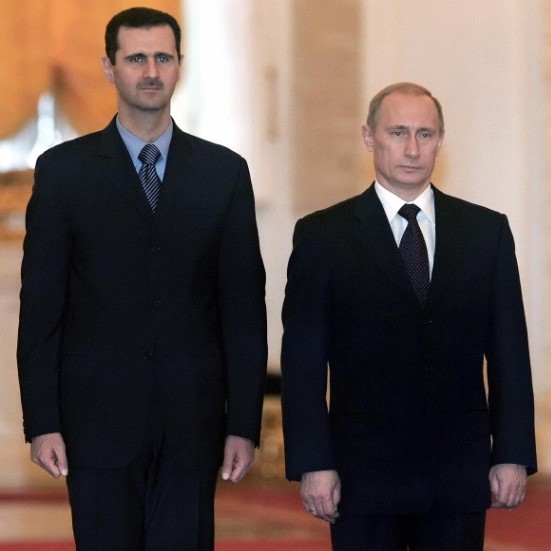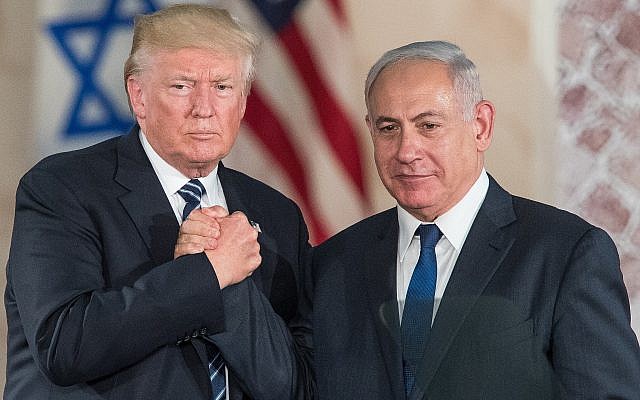The declining US influence in the Middle East has presumably prompted the Trump administration to militarily intervene in the festering Syrian civil war. After the chemical attack in the Syrian town of Ghouta on 21 August 2013, the US had anxiously waited for a similar attack in conflict-battered Syria so as to provide a legitimate cause for its direct military intervention against the already belligerent Assad regime.
The recent chemical attack in Khan Sheikhoun in ldlib has provided a cover to the US to employ disruptive firepower against the brutal Assad regime in Syria. Through direct military intervention in Syria, the Trump administration is seemingly inclined to break a lance with Russia and effectively foster the security of Jewish Israel in the oil-rich region. The unfolding situation in war-torn Syria is highly likely to bring about increasing muscle-flexing, saber-rattling and geopolitical divergences between resurgent Russia and declining America in the Middle East and North Africa (MENA).
Without any impartial and credible investigation, the US has made the Assad regime chiefly responsible for the deadly chemical attack. According to the Russian Ministry of Defense, the Syrian warplanes pounded a large terrorist depot and a concentration of military hardware in the eastern outskirts of the Khan Sheikhoun. The attack dispersed the lethal chemicals in the air, suffocating a large number of people near the epicentre of the attack.
As per some credible sources, the deadly chemicals were transported from militancy-stricken Iraq to Syria in order to secretively produce lethal weapons against the Assad regime. Given its vast and ubiquitous intelligence networks in both Iraq and Syria, the US presumably knew that deadly chemical bombs were being prepared in Khan Sheikhoun. It goes without saying that Washington had waited for the Assad regime to attack the chemical depot, providing the Trump administration with a pretext to begin direct military attacks in Syria.
The US launched fifty-nine Tomahawks against the Al Shayrat air base in Homs province from the destroyers USS Porter and USS Ross, which are currently stationed in the eastern Mediterranean. Some early reports indicate that the airfield’s planes and support infrastructure were severely damaged or destroyed.
The attack was hailed by the Syrian opposition and supported by American allies including NATO, the European Union, Britain, France, Germany, Israel, Japan, Saudi Arabia and Turkey. But it was vehemently denounced by Assad’s major allies Iran and Russia, with Moscow warning that it would inflict “considerable damage” on US-Russia ties and halt an agreement with Washington aimed at avoiding clashes in Syrian airspace. China and Iraq also opposed the fateful US missile strikes.
American Objectives behind the Missile Attacks
What should not be clean forgotten is that the direct US military intervention in Syria is not calculated to protect the suffering Syrian people from the continued oppression and suppression of the brutal Assad regime and ragtag terrorist outfits. Nor does the US sincerely aspires to see democratic norms flourishing in Syria. Washington’s main target is to dethrone Russian regional client — the Assad regime — and subsequently replace it with an American puppet. In an interview with CNN, Trump’s UN Ambassador Nikki Haley said that “We don’t see a peaceful Syria with Al Assad in there, and further military action might be taken if Trump decides it is necessary.”
The US has a long list of military and economist objectives to maximise after ousting President Assad from strategically important Syria. First and foremost, due to America’s stunning failure to end the simmering civil wars in Syria and Yemen, Washington’s major regional allies have started slowly tilting towards China and Russia. The Saudi king’s recent visit to China is a major case in point.
The US sells arms and warfare technology worth billions of dollars to some Arab monarchies. But, its direct military inaction against the Assad regime bitterly angered Saudi Arabia, the major American arms importer in the Middle East. More importantly, the Chinese display of military power in the South and East China Seas and Russian application of modern aircraft in Syria and Crimea have attracted some Arab countries to purchase weapons from these two countries. During his visit to China, King Salman of Saudi Arabia signed a deal with Beijing to set up a factory in the kingdom for producing Chinese hunter-killer aerial drones.

So, the US seems to have decided to employ firepower against the Assad regime so that Washington’s major regional arms importers will not fully jump on the Chinese and Russian bandwagon. American missile attacks against Assad forces will not only advertise its modern weaponry, they will also ensure Arab countries that Washington can militarily intervene in the Middle East to safeguard the core strategic interests of its regional allies.
After removing its regional arch foe Muammar Gaddafi from power in Libya in 2011, the US has been bent upon overthrowing Bashar al-Assad — the only Russian client in the region. The Assad regime has provided Russia with the Tartus naval facility and the Khmeimin air base. These bases have immensely helped Russia continue its annexation of Crimea and increase its naval presence in the eastern Mediterranean Sea. In January, Russian-backed separatists in eastern Ukraine ramped up their fight against Ukrainian government forces, bringing the violence there to its highest level in a year and a half. The US considers this a direct challenge to the Minsk Agreements signed by Russia and Ukraine, engineered by Germany and France and backed by the US — designed to impede the war and pave the way to restoring lasting peace.
The US recourse to missile attack stems from the fact that western-funded rebels have thus far proved ineffective to oust Assad from power.
Despite Turkey’s resistance, the US has continued to provide military hardware to Kurdish fighters against Daesh in Syria. The Turkish government is fearful that the US will use the Kurds of Iraq, Syria and Turkey to carve out an independent Kurdish state in the region anytime in the future. Moreover, the US has repeatedly rejected all Turkish requests to extradite Fethullah Gülen to Turkey. Since Turkey blamed Gulen for organising the abortive coup of July 2016, the US refusal to hand Gulen over to the Turkish government has made Ankara suspicious of American involvement in the botched army putsch.
Such American hostile attitude towards Turkey has made the latter reset its fractured relations with Russia. Both Russia and Turkey are currently sharing intelligence information and coordinating with each other against Deash in Syria. More importantly, Turkey has lately shown its interest in purchasing advanced S-400 air and missile defence systems from Russia. Such Russian missile technology will help Turkey get rid of the NATO-deployed missiles on Turkish soil.
The US is well aware that Russia will capitalise on its partnership with Turkey to augment its naval and military presence in the Mediterranean Sea and Eastern Europe. If Moscow succeeds to bring Ankara under its regional fold, the US will lose its most powerful NATO partner in the region. To prevent Turkey from jumping into Russian bandwagon, the US will find more pretext to organise aerial attacks against the Assad regime. Besides, Washington will slowly keep itself aloof from Kurdish fighters in Syria in a bid to appease Turkey.
The Trump administration is also concerned about the increasing support of Hamas, Iran and Hezbollah to the embattled Assad regime. If President Assad remains in the saddle for a long time, this will probably help Iran forge a strong regional bloc with Hams, Syria and Hezbollah against Israel.

Arguably, President Trump requires Israel’s support to shape public opinions at home for his domestic and foreign policies. Therefore, the Trump administration has decided to inhibit the unfolding Iranian-sponsored alliance against Israel by further weakening the Assad regime in Syria. The latest missile attacks were designed to strengthen the position of rebels against the Assad government in the raging civil war.
The US is also perturbed by the Russian increasing presence and geopolitical interests in Libya. The commander of American forces in Africa, Gen. Thomas Waldhauser, has lately observed that Russia’s role in Libya is deepening, with its special forces on the ground in Egypt just over the border with Libya. He opines that Russian has continued to extend support to the powerful Libyan commander Khalifa Haftar, who is resisting the United Nations-recognized government in Tripoli. Resultantly, the US is inclined to use military power against the Russian-supported regime in Syria so that Moscow will not be able to spread its military wings in Libya.
When the US launched the missile attacks against Syria, President Trump was hosting Chinese President Xi Jinping at his Mar-a-Lago estate in Florida. China is the major diplomatic, military and economic supporter of the North Korean regime that has constantly threatened the US and South Korea with nuclear attacks. By these missile attack against the Assad regime, the US has presumably indicated to China that it can resort to limited attacks calculated to neutralise the nuclear threat posed by North Korea.
Since Syria is the only regional country hosting some Russian naval and military bases, Moscow will move heaven and earth to militarily protect the Assad regime from the US and ragtag rebels. Such Russian military support to Assad is likely to further increase the divergences between Russia and the US in terms of bringing a lasting end to the Syrian war. Therefore, the helpless Syrians will continue to bear the brunt of the brutalities of the Assad regime and insurgent groups.




